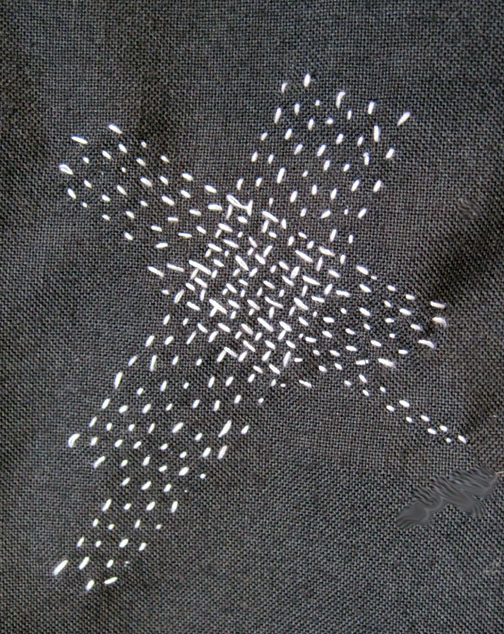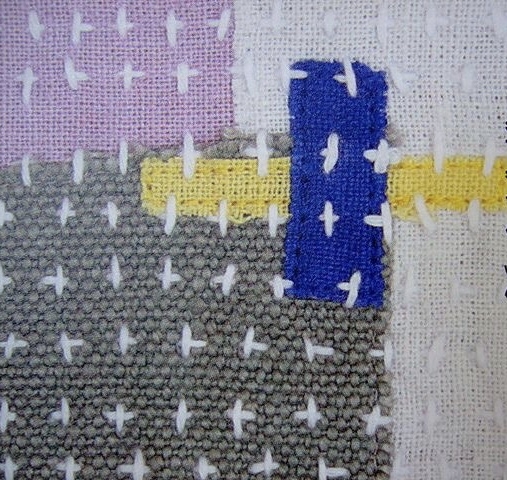Make Do and Mend
Would it surprise you to learn that the average piece of clothing is worn only 7 times before it is discarded? Seven times. When I was younger, and considering wether a purchase was “worth it”, I would calculate the Cost Per Wear- and use that number to decide how much to spend on an item of clothing. If I knew that I would only wear something 7 times, it would hardly be worth spending much on. Now a coat, sweater or dress that might be worn a few times a year for many years would be a different story. I have one grey cashmere cardigan that is fairly tattered by now, but it has been in constant seasonal rotation for twenty years. It might have cost me $100 back then, but overtime, just pennies per wear. A new pair of jeans might cost even more than that- but what if they are only worn for a single season? Do you understand my point?
Would it surprise you to learn that the average piece of clothing is worn only 7 times before it is discarded? Seven times. When I was younger, and considering wether a purchase was “worth it”, I would calculate the Cost Per Wear- and use that number to decide how much to spend on an item of clothing. If I knew that I would only wear something 7 times, it would hardly be worth spending much on. Now a coat, sweater or dress that might be worn a few times a year for many years would be a different story. I have one grey cashmere cardigan that is fairly tattered by now, but it has been in constant seasonal rotation for twenty years. It might have cost me $100 back then, but overtime, just pennies per wear. A new pair of jeans might cost even more than that- but what if they are only worn for a single season? Do you understand my point?
During World War II, the Make Do And Mend campaign was Vogue's call to women to alter, change, patch or re-do clothing rather than wasting precious resources. It encouraged homemakers to be resourceful and thrifty. Handmade and hand-repaired clothing became an essential part of wartime life. People got creative across the country out of necessity, finding ways to make and care for clothes - and forge their own wartime style. At that time, more people knew how to sew and how to repair their own clothes.
Growing up, clothing was a luxury. I am the oldest of 10 children- fortunately (since I do love clothes) I learned to sew at a very young age. I spent many years practicing on thrift store bargains and hand me downs. Through necessity, an article of clothing could live many lives before finally hitting the scrap bin. This experience has greatly informed my style and point of view.
Sustainability is a key buzz word in the world of fashion and textiles these days. With good reason! Next to fossil fuels, the fashion industry is the worlds biggest environmental offender. But it doesn’t have to be. We can disrupt the cycle. Buy less, care for what you have, swap with a friend, learn to mend! I promise you won’t regret it!
If you want a stylish way to begin this journey, look no farther! I am having a Visible Mending Workshop for teens and adults on November 10.
Last year’s sweatshirt is this year’s prized top!
Visible mending.
Visible mending on patchwork. Look for this in my shop soon- I just need to remember to frame it:)
Conscious Consumption
As someone who loves clothes and fashion, you might be surprised to learn that I actually own very few clothes. Now, that is. In my younger years, I had multiple closets full of clothes and shoes in excess of 100 pairs. Not anymore. Once I became a mom, space, clutter and time became paramount. I also learned more about efficiency. Having fewer clothes means less upkeep and actually more options. The things that I do own, I wear and love.
As someone who loves clothes and fashion, you might be surprised to learn that I actually own very few clothes. Now, that is. In my younger years, I had multiple closets full of clothes and shoes in excess of 100 pairs. Not anymore. Once I became a mom, space, clutter and time became paramount. I also learned more about efficiency. Having fewer clothes means less upkeep and actually more options. The things that I do own, I wear and love.
To keep from getting bored with my clothes, I do tend to refresh and upcycle quite a bit. I might combine elements from two or more items or just cut up a skirt and refashion it into a dress. Often times these remakes are some of the clothes that I get the most compliments on.
To share some ideas with you on how you too can begin to slow down and reconsider your own closet updates, next month I am hosting a Sashiko mending workshop and a Clothing Swap. In addition to these workshops, I will be posting new content on this blog (now that I am promising it- it will happen. Accountability, my friends!)
What are some techniques that you would like to learn?






